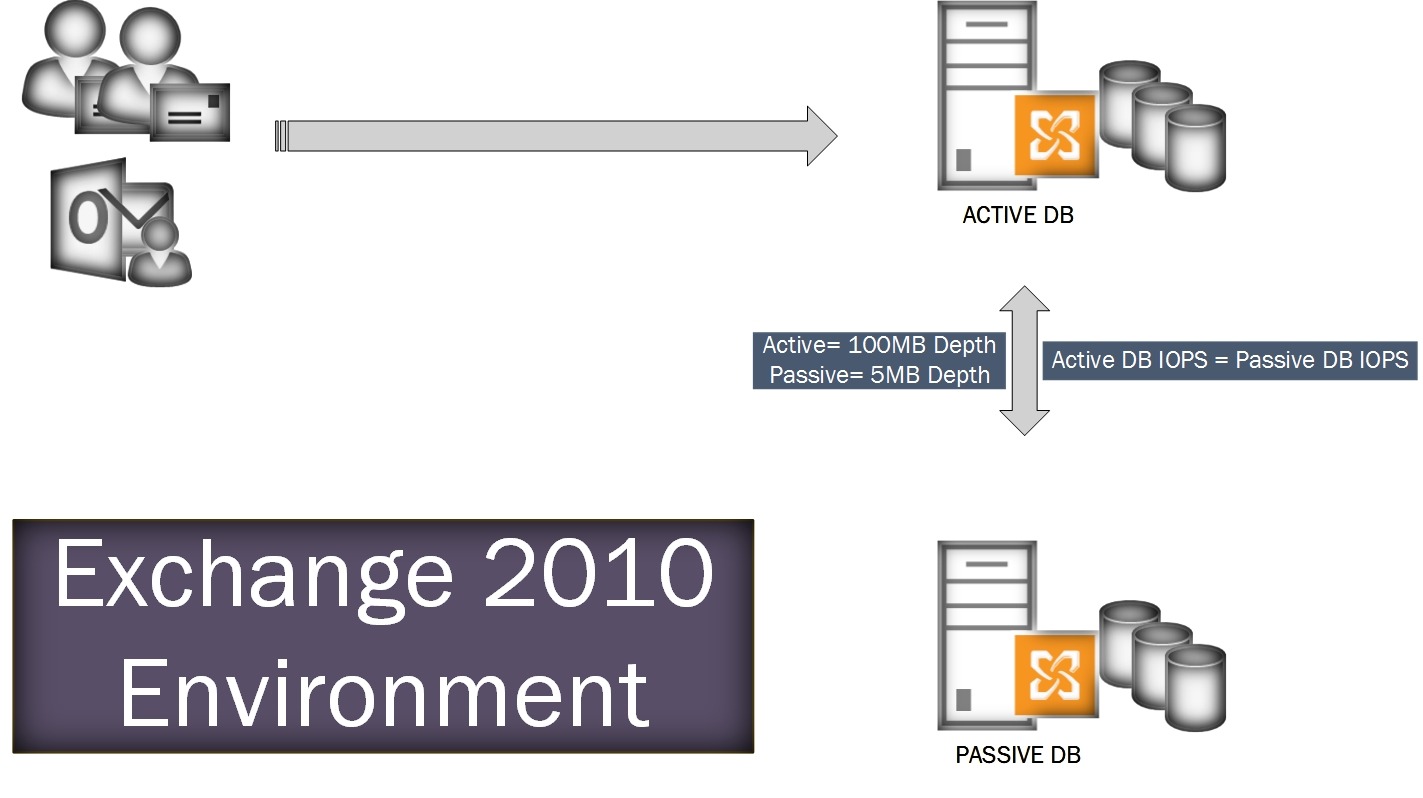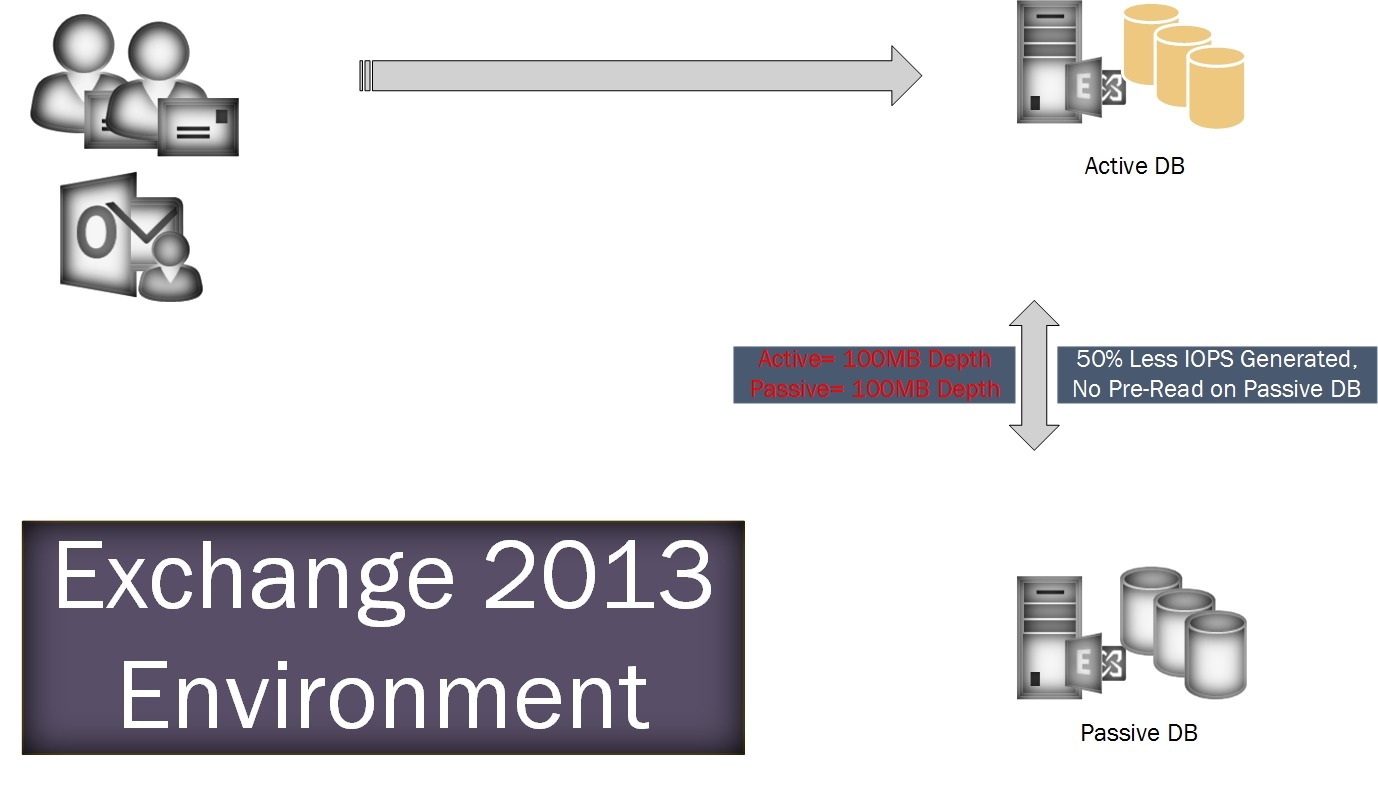As you can see, Microsoft has made a tremendous number of improvements with the way that Exchange Server manages it’s storage in DAG environments. Passive database copies generates fewer IOPS (a 50% reduction), and failover happens more quickly than ever before.
Furthermore, Exchange Server can even use spare disks to quickly recover from certain types of disk failures. Some new feature:
- Exchange 2013 is fine with multiple active databases residing on the same volume.
- Auto Reseed should still work in a DAG environment
- Would you still need a backup if you have a fourth copy? DAG is powerful and really fast because of the improvements on the IOPS.
Now you can surely use SCDPM to take leverage of capturing the database from the DAG, as SCDPM would not recognize exchange databases without the DAG in place and in multi node DAG systems it’s fast too. With the improvements in Exchange 2013 IOPS requirements, changes in the VSS requirements, availability of larger disks, and the ability to host multiple database copies on a single drive and the MBX just does that; working like a real work horse. Reduction in IOPS enables you to leverage larger disks in terms of capacity and IOPS as efficiently as possible. Exchange 2013 now have fast failover with a high checkpoint depth on the passive copy (100 MB). As a result of increasing the checkpoint depth and de-tuning the aggressive pre-reads, IOPS for a passive copy is about 50% of the active copy IOPS in Exchange 2013. Moreover, logging in ESE to persist the cache as the transition from passive to active is made. Because ESE doesn’t need to flush the cache, we get fast failover.
Quoting from TechNet (High Availability and Site Resilience): http://technet.microsoft.com/en-us/library/dd638137(v=exchg.150).aspx
In Exchange 2010, passive database copies have a very low checkpoint depth, which is required for fast failover. In addition, the passive copy performs aggressive pre-reading of data to keep up with a 5-megabyte (MB) checkpoint depth. As a result of using a low checkpoint depth and performing these aggressive pre-read operations, IOPS for a passive database copy was equal to IOPS for an active copy in Exchange 2010.
In Exchange 2013, the system is able to provide fast failover while using a high checkpoint depth on the passive copy (100 MB). Because passive copies have 100-MB checkpoint depth, they’ve been de-tuned to no longer be so aggressive. As a result of increasing the checkpoint depth and de-tuning the aggressive pre-reads, IOPS for a passive copy is about 50 percent of the active copy IOPS in Exchange 2013.
Having a higher checkpoint depth on the passive copy also results in other changes. On failover in Exchange 2010, the database cache is flushed as the database is converted from a passive copy to an active copy. In Exchange 2013, ESE logging was rewritten so that the cache is persisted through the transition from passive to active. Because ESE doesn’t need to flush the cache, you get fast failover.
Another benefit is a 25% increase in aggregate disk utilization, and a balanced configuration of four databases with four copies across four disks and four servers. In the event you lose partial service (for example, you lose two DAG members and you have a datacenter over), you are still at only 50% IOPS utilization.
Misconception: The passive copy of the DB should not require such IOPS as there is no user activity on the passive DB. This was an assumption on the fact of zero user activity on the passive DB. Since the passive DB IOPS has been reduced by 50%, the aggressive pre-reading is no longer done in the passive copy due to the design changes in the ESE logging, although storage capacity is increasing, IOPS aren’t.
Exchange server 2013 has made a total getup change by rolling into a two role specification impacting the MBX and has made the MBX a real work horse. Of course you should look at the bright side of it as hardware requirements came down massively. It certainly is a compelling point.
i.e: All these information shared from session notes attended in local training. These information shared and I have recreated the images. And from following links: http://windowsitpro.com/blog/road-economic-competitiveness-ten-years-io-reduction-exchange


